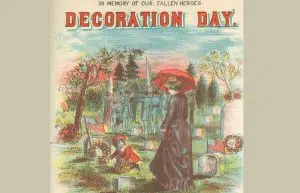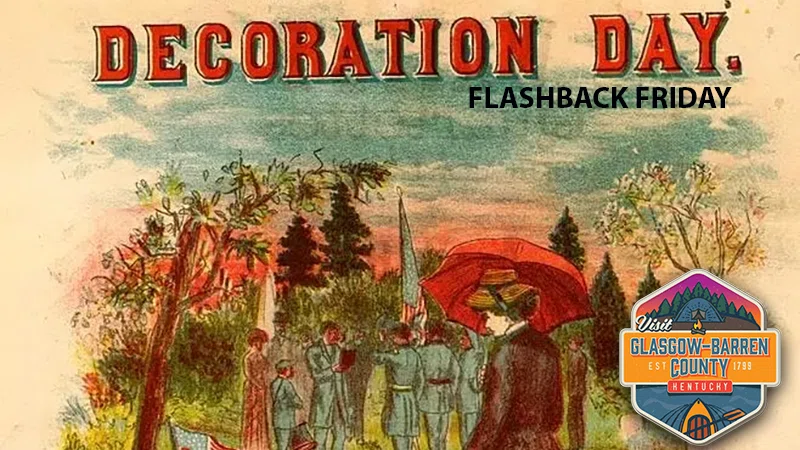By JENNIFER MOONSONG
Glasgow News 1
Memorial Day now heralds the beginning of summer, and is the gateway between seasons, denoted by backyard grilling, opening the pool and days spent at the lake. However, until 1971, it was known as Decoration Day, and the traditions surrounding the holiday were quite different.
For more than a century the start of summer was steeped in old-time ceremonious tradition, with the ritual of visiting cemeteries to honor ancestors and to “decorate” the graves of those who had passed on. In many instances, families and groups of families would gather in rural cemeteries for day-long events that involved the cleaning, repairing, and upkeep grave sites, as well as picnicking and flower placing.

A post card from the late 1800s depicting the events of Decoration Day, which became Memorial Day in 1971.
NATIONAL ARCHIVE PHOTO
The tradition of Decoration Day began with the Civil War, following the creation of the first national cemeteries in the early 1960s. More than 600,000 American men died as a result of the Civil War and their graves were adorned with flowers and flags. Although honoring soldiers is the foundation for Decoration Day, the tradition soon extended to all deceased ancestors, not only servicemen.
American flags have a very clear, and evident meaning. They are not, however, the only thing adorning graves which carry deep symbolism. Each type of flower also represents various sentiments, and traditionally people chose flowers with specific meanings for graves. The meanings associated with flowers were printed in the Farmer’s Almanac, and was passed down from the Victorian Era, and carried to the United States by European immigrants. Some of the meanings changed and new representations were assigned to different blossoms. For example, red poppies are representative of those who lost their lives in military service. White lilies are a symbol of peace, red roses symbolize true love, and Forget-Me-Nots are symbols of remembrance.
Other flowers traditionally popular for decoration day are white daisies and blue irises. Living floral arrangements were eventually replaced by mostly artificial flowers.

Woodlawn Cemetery in New York adorned with flowers in the early 1900s. The flowers were live bouquets.
NATIONAL ARCHIVE PHOTO

Comments